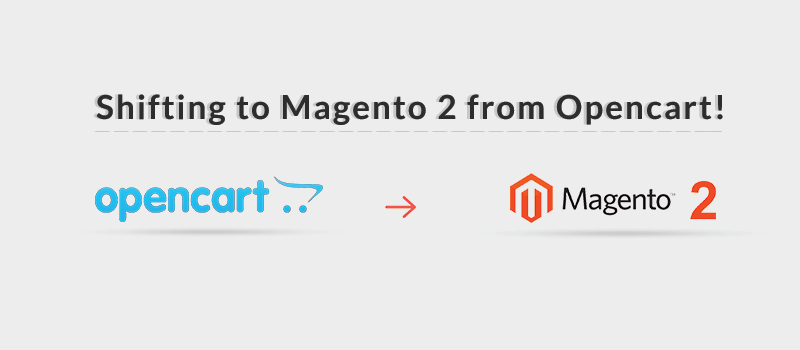What Should You Expect While Migrating From OpenCart To Magento 2?
Talk about the best content management systems available today, and OpenCart and Magento 2 are sure to be obvious choices. Both of them are open-source, rich in features and help merchants effectively run their e-commerce websites, tailored according to their tastes, while also taking care of being search-engine friendly. In addition to that, the two share likable common features like multiple-currency support and humongous community support.
Why Migrate?
E-commerce businesses usually prefer OpenCart for its user-friendliness which facilitates smoother administration, along with multiple features that make it easier for first-timers as well. However, there has been a shift in this trend, to Magento, in recent years. This can be partly due to certain limitations that OpenCart puts forth. As the data of e-commerce stores increases, there arises the need for efficient caching, which in OpenCart has to be done by the merchants manually, thereby costing them a lot of time and money. Moreover, OpenCart offers limited customizations despite being an open-source CMS which forces developers to make mild changes in the core files, which, again, is not an easy task considering the difficult architecture of OpenCart. In Magento, this is not the case. With high scalability and built-in caching, you can make innovative customizations.
How to Migrate?
If you’re looking forward to migrating your e-commerce website, ensure that all your data is accurately migrated, with all its products, customer-profiles, and orders. Also, the existing SEO should be retained and all this has to be done in the minimum possible time. First off, create a back-up to your store, just in case anything goes wrong. Design and convert the HTML into Magento theme and install the requisite extensions before testing it for stability. Migrate all data by creating a custom-migration script; then proceed to set up the rest of the attributes like shipping and payment gateways in Magento. Finally, perform relevant quality analysis tests thoroughly and calculate the total time that might be required for the complete migration process.
What Are The Expected Results?
With a properly planned approach, you’ll most likely not encounter loss of data or other drawbacks while migrating. Although, if you consider upgrading within Magento 2 after migration, say from Magento 2.1 to 2.2, you might have to code additional patches for incompatibilities that arise from additional or new extensions.
Are you searching for expert coders and want to hire Magento eCommerce developers in Malaysia for your website? Get in touch with Openwave at the earliest for store migration and other development needs!


no responses.